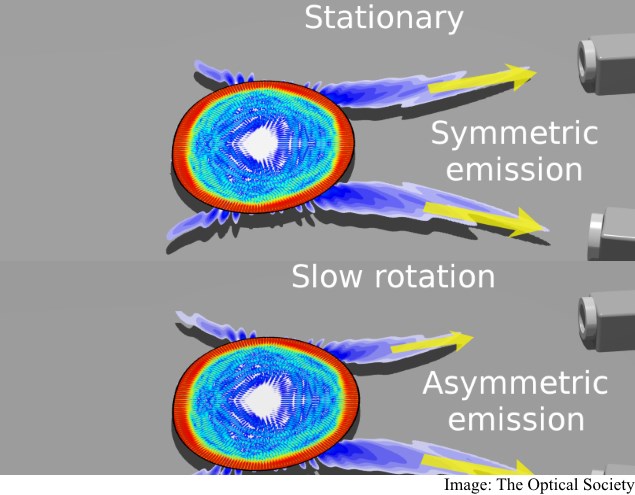- Home
- Science
- Science News
- New Technique Signals Advent of World's Smallest Light Powered Gyroscope
New Technique Signals Advent of World's Smallest Light-Powered Gyroscope

"We have found a new detection scheme that may lead to the world's smallest gyroscope sooner," said Li Ge, physicist at the City University of New York.
More than creative learning toys, gyroscopes are indispensable components in a number of technologies, including inertial guidance systems, which monitor an object's motion and orientation.
Space probes, satellites and rockets continuously rely on these systems for accurate flight control.
Optical gyroscopes have no moving parts. Instead, dual light waves race around an optical cavity or fibre, constantly passing each other as they travel in opposite directions.
After directly measuring the colour change of the light waves, the researchers determined that they could measure the pattern the light produced as it exited the cavity.
"That was our key innovation - finding a new signal with a much improved sensitivity to rotation," said Ge in a paper that published in The Optical Society's (OSA) new journal Optica.
A pair of light waves - one zipping clockwise the other counterclockwise around a microscopic track - holds the key.
According to researchers, further studies are needed to take into consideration the possibility that many modes, or light paths, exist simultaneously in the cavity.
Catch the latest from the Consumer Electronics Show on Gadgets 360, at our CES 2026 hub.
- Samsung Galaxy Unpacked 2025
- ChatGPT
- Redmi Note 14 Pro+
- iPhone 16
- Apple Vision Pro
- Oneplus 12
- OnePlus Nord CE 3 Lite 5G
- iPhone 13
- Xiaomi 14 Pro
- Oppo Find N3
- Tecno Spark Go (2023)
- Realme V30
- Best Phones Under 25000
- Samsung Galaxy S24 Series
- Cryptocurrency
- iQoo 12
- Samsung Galaxy S24 Ultra
- Giottus
- Samsung Galaxy Z Flip 5
- Apple 'Scary Fast'
- Housefull 5
- GoPro Hero 12 Black Review
- Invincible Season 2
- JioGlass
- HD Ready TV
- Laptop Under 50000
- Smartwatch Under 10000
- Latest Mobile Phones
- Compare Phones
- OPPO Reno 15 Pro Max
- Honor Win RT
- Honor Win
- Xiaomi 17 Ultra Leica Edition
- Xiaomi 17 Ultra
- Huawei Nova 15
- Huawei Nova 15 Pro
- Huawei Nova 15 Ultra
- Asus ProArt P16
- MacBook Pro 14-inch (M5, 2025)
- OPPO Pad Air 5
- Huawei MatePad 11.5 (2026)
- Xiaomi Watch 5
- Huawei Watch 10th Anniversary Edition
- Acerpure Nitro Z Series 100-inch QLED TV
- Samsung 43 Inch LED Ultra HD (4K) Smart TV (UA43UE81AFULXL)
- Asus ROG Ally
- Nintendo Switch Lite
- Haier 1.6 Ton 5 Star Inverter Split AC (HSU19G-MZAID5BN-INV)
- Haier 1.6 Ton 5 Star Inverter Split AC (HSU19G-MZAIM5BN-INV)












